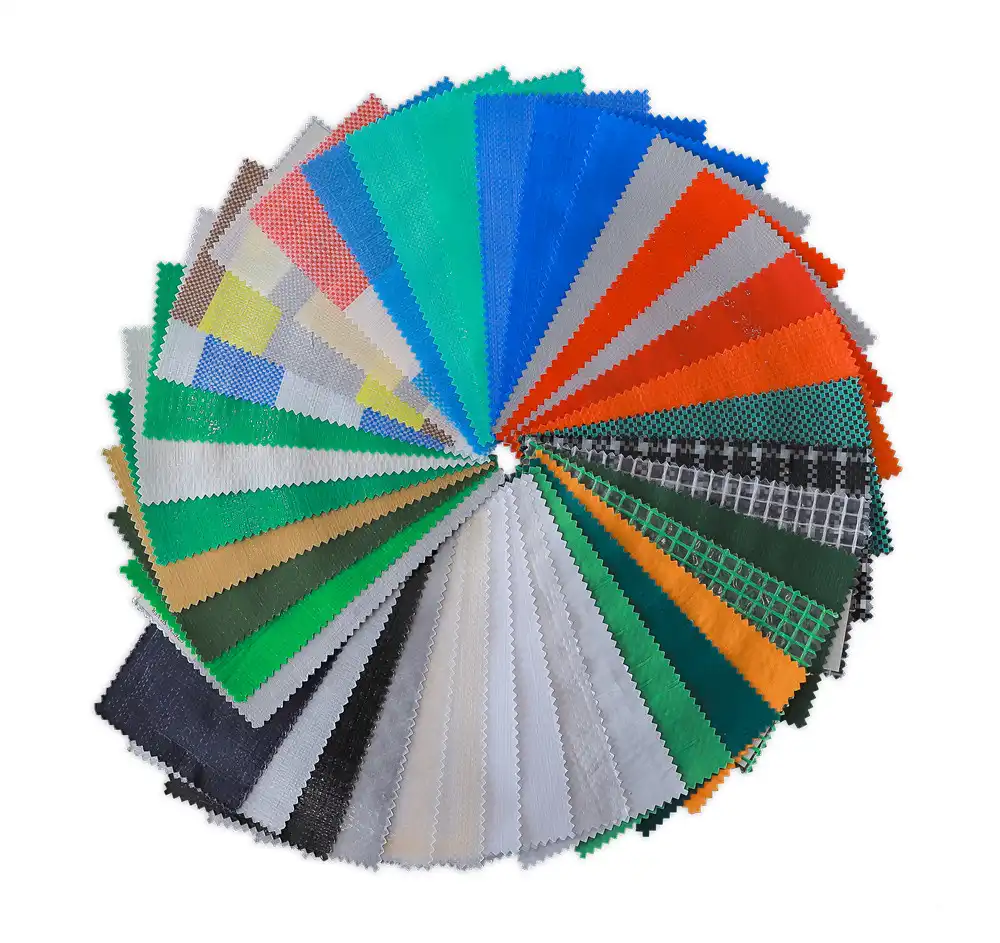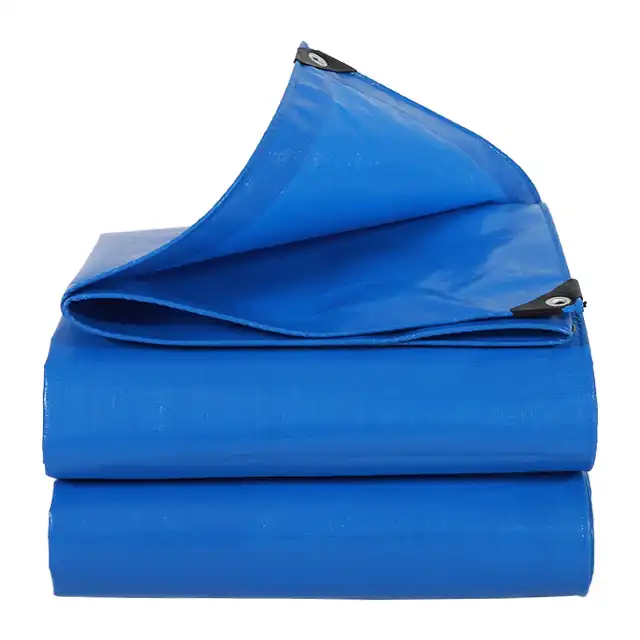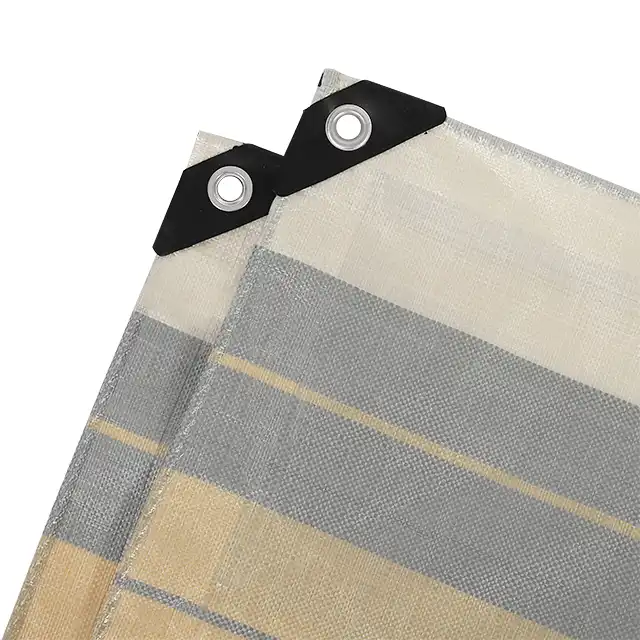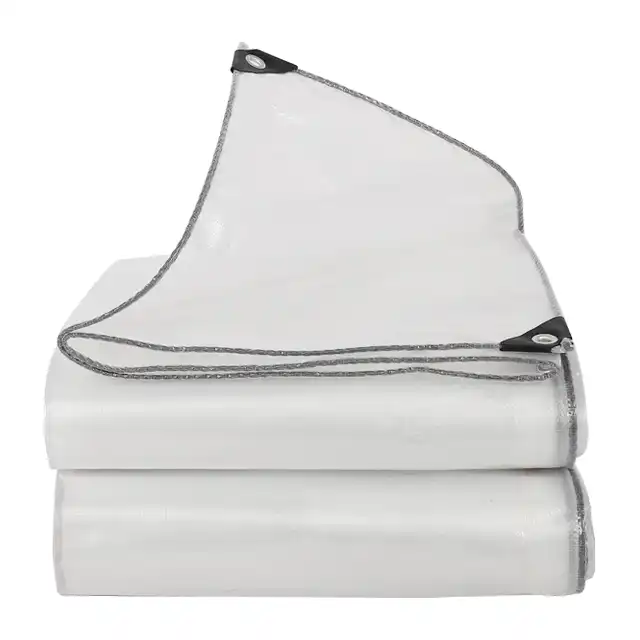Why B2B Buyers Prefer PE Tarpaulin: Benefits Explained?
In today's competitive business landscape, B2B buyers are increasingly turning to polyethylene (PE) tarpaulin as their preferred protective covering solution. This shift represents more than just a trend—it reflects a fundamental understanding of value, durability, and operational efficiency that PE tarpaulin delivers across diverse industrial applications. From construction sites to agricultural operations, from logistics companies to manufacturing facilities, businesses worldwide are discovering that PE tarpaulin offers an unmatched combination of performance characteristics that directly translate into cost savings and operational reliability. The growing preference for PE tarpaulin among B2B buyers stems from its exceptional versatility and proven track record in demanding commercial environments. Unlike traditional covering materials, PE tarpaulin provides a comprehensive solution that addresses multiple business needs simultaneously: weather protection, UV resistance, chemical compatibility, and long-term durability. This multi-functional approach has made PE tarpaulin an indispensable asset for businesses seeking to optimize their operational efficiency while maintaining stringent quality standards. The material's ability to perform consistently across various climatic conditions and industrial applications has positioned it as the go-to choice for procurement managers and operations directors who understand the critical importance of reliable protective solutions in maintaining business continuity and protecting valuable assets.
Superior Durability and Cost-Effectiveness of PE Tarpaulin

Enhanced Material Composition and Structural Integrity
PE tarpaulin's exceptional durability begins with its sophisticated manufacturing process, which combines high-density polyethylene (HDPE) woven fabric with low-density polyethylene (LDPE) coating. This dual-layer construction creates a material that significantly outperforms traditional alternatives in terms of longevity and resistance to environmental stressors. The HDPE woven fabric provides the structural backbone, offering superior tensile strength and tear resistance, while the LDPE coating delivers waterproofing and chemical resistance. This combination results in a PE tarpaulin that can withstand weights ranging from 65gsm to 280gsm, making it suitable for applications from light-duty covering to heavy industrial protection. The manufacturing excellence extends to the yarn composition, where high-strength polyethylene fibers ranging from 400D to 2500D are utilized to create a tightly woven structure. This precise engineering ensures that each PE tarpaulin maintains its integrity under stress, whether subjected to wind loads, mechanical abrasion, or chemical exposure. The mesh count specifications of 10x10 to 14x14 provide optimal balance between material density and flexibility, allowing the tarpaulin to conform to irregular surfaces while maintaining its protective properties. The thickness range of 7-12 mil offers versatility for different applications, with thicker variants providing enhanced puncture resistance for heavy-duty industrial use, while thinner options offer excellent handling characteristics for packaging and temporary covering applications.
Long-Term Economic Benefits and ROI
The cost-effectiveness of PE tarpaulin becomes evident when analyzing total cost of ownership rather than initial purchase price. B2B buyers consistently report that PE tarpaulin delivers superior return on investment through extended service life, reduced replacement frequency, and minimal maintenance requirements. The material's resistance to UV degradation, achieved through specialized UV treatment ranging from 1% to 7%, ensures that the tarpaulin retains its mechanical properties and appearance throughout its operational life. This UV protection translates directly into cost savings, as businesses avoid the frequent replacement cycles associated with untreated materials that deteriorate rapidly under solar exposure. The economic advantages extend beyond material longevity to include operational efficiencies. PE tarpaulin's lightweight yet robust construction reduces handling costs and labor requirements during installation and repositioning. The material's flexibility and ease of manipulation allow for quick deployment in time-critical situations, minimizing operational downtime and associated costs. Additionally, the waterproof characteristics eliminate the need for multiple covering layers, reducing both material costs and installation complexity. The anti-corrosion and shrink-proof properties ensure dimensional stability over time, preventing costly adjustments and replacements due to material degradation or dimensional changes.
Customization and Scalability Options
Modern B2B operations demand flexibility in their supply chain and material specifications, and PE tarpaulin excels in providing customizable solutions that adapt to specific business requirements. The availability of custom sizing, with roll widths up to 5.1 meters and sheet dimensions upon request, eliminates the waste and inefficiency associated with standard-sized materials that don't precisely match application requirements. This customization capability is particularly valuable for businesses with unique equipment dimensions or specialized covering needs, as it ensures optimal material utilization and performance. The color customization options available in PE tarpaulin serve both functional and branding purposes for B2B applications. Beyond aesthetic considerations, specific colors can provide functional benefits such as improved visibility for safety applications, heat reflection for temperature-sensitive storage, or corporate branding for public-facing installations. The ability to incorporate custom logos and branding elements transforms functional PE tarpaulin into a marketing tool that reinforces brand visibility while serving its primary protective function. This dual-purpose capability provides additional value that traditional covering materials cannot match, making PE tarpaulin an attractive option for businesses seeking to maximize the utility of their protective covering investments.
Versatile Applications and Industrial Performance
Construction and Building Applications
The construction industry represents one of the largest markets for PE tarpaulin, driven by the material's exceptional performance in protecting building materials, equipment, and work areas from weather exposure. PE tarpaulin's waterproof characteristics are particularly crucial in construction environments where moisture infiltration can cause significant material damage and project delays. The material's ability to provide reliable weather protection across various climatic conditions makes it an essential component of construction site management, protecting everything from exposed structural elements to sensitive equipment and materials awaiting installation. Beyond weather protection, PE tarpaulin serves critical safety functions in construction applications. The material's tear-resistant properties ensure that temporary barriers and safety enclosures maintain their integrity under stress, providing reliable protection for workers and the public. The UV treatment incorporated into quality PE tarpaulin prevents material degradation that could compromise safety installations over extended project timelines. The ease of installation and removal makes PE tarpaulin ideal for temporary construction applications where frequent reconfiguration is required, such as scaffolding covers, concrete curing blankets, and dust containment barriers. The durability characteristics of PE tarpaulin prove particularly valuable in construction environments where materials are subjected to rough handling and challenging conditions. The puncture resistance and tear strength ensure that the tarpaulin maintains its protective function even when exposed to sharp edges, falling debris, and mechanical stress. This reliability translates into reduced material replacement costs and improved project efficiency, as construction teams can depend on PE tarpaulin to provide consistent protection throughout project lifecycles. The material's chemical resistance also provides protection against concrete additives, solvents, and other construction chemicals that might damage alternative covering materials.
Transportation and Logistics Solutions
The transportation and logistics sector has embraced PE tarpaulin as a superior solution for cargo protection, truck covering, and goods packaging applications. The material's combination of durability and flexibility makes it ideal for truck covers that must withstand highway wind loads while providing secure protection for diverse cargo types. PE tarpaulin's waterproof properties ensure that moisture-sensitive goods remain protected during transport, regardless of weather conditions encountered during transit. The material's resistance to temperature extremes provides reliable performance across diverse climatic zones, making it essential for long-haul transportation operations. The lightweight characteristics of PE tarpaulin provide significant advantages in transportation applications where weight restrictions and fuel efficiency are critical considerations. Unlike heavier alternative materials, PE tarpaulin delivers comprehensive protection without substantially increasing vehicle weight or fuel consumption. This efficiency translates directly into operational cost savings and improved environmental performance for transportation companies. The material's flexibility allows for easy handling during loading and unloading operations, reducing labor time and improving operational efficiency at distribution centers and loading facilities. PE tarpaulin's durability in transportation applications extends beyond weather protection to include resistance to road debris, UV exposure, and mechanical stress from cargo shifting and tie-down systems. The tear-resistant properties ensure that minor punctures or snags don't propagate into major failures that could compromise cargo protection. The material's ability to maintain its protective properties through repeated use cycles makes it particularly valuable for transportation companies operating on tight schedules where equipment reliability is paramount. The availability of custom sizing and reinforcement options allows transportation companies to optimize tarpaulin specifications for specific vehicle types and cargo requirements.
Agricultural and Aquaculture Applications
Agriculture and aquaculture industries have found PE tarpaulin to be an invaluable tool for crop protection, equipment covering, and facility management applications. The material's UV protection capabilities are particularly important in agricultural settings where prolonged sun exposure can degrade inferior covering materials, potentially exposing valuable crops or equipment to damage. PE tarpaulin's waterproof characteristics provide essential protection for hay storage, equipment sheltering, and temporary structure covering in agricultural operations where moisture control is critical for product quality and equipment longevity. The impermeable properties of specialized PE tarpaulin make it essential for aquaculture applications where water containment and quality control are paramount. The material's chemical resistance ensures compatibility with aquaculture systems, while its durability provides long-term reliability in challenging aquatic environments. The availability of food-grade formulations ensures that PE tarpaulin used in aquaculture applications meets the stringent safety requirements for food production systems. The material's flexibility allows for custom installation configurations that adapt to various pond shapes and aquaculture system designs. In greenhouse applications, PE tarpaulin serves dual functions as both structural covering and environmental control material. The UV treatment protects both the tarpaulin itself and the plants beneath from harmful radiation, while the material's transparency options allow for optimal light transmission. The waterproof characteristics ensure reliable weather protection for greenhouse structures, while the tear resistance provides durability against wind loads and mechanical stress. The ease of installation and maintenance makes PE tarpaulin an attractive option for agricultural operations where labor efficiency and equipment reliability are essential for operational success.
Advanced Manufacturing and Quality Assurance
State-of-the-Art Production Technology
The manufacturing excellence behind quality PE tarpaulin begins with advanced production technology that ensures consistent material properties and performance characteristics. Modern manufacturing facilities utilize sophisticated extrusion equipment with over 30 units of high-tech extruding machines that precisely control yarn thickness from 400D to 2500D, ensuring optimal material properties for specific applications. The weaving process employs specialized water-jet looms, including unique 5-meter and 4-meter width fabric weaving machines, along with over 400 Korea-imported automatic water-jet looms that produce fabric widths from 1.5 meters to 5 meters without joints, eliminating weak points that could compromise material integrity. The coating process represents a critical stage in PE tarpaulin manufacturing, where four units of large fabric coating machines apply precise LDPE coatings under the supervision of professional technicians who monitor quality parameters throughout the process. This careful attention to coating uniformity ensures consistent waterproofing and chemical resistance across the entire material surface. The integration of automated quality control systems with human expertise provides the oversight necessary to maintain the stringent quality standards demanded by B2B applications where material failure can result in significant operational and financial consequences. The finished product processing capabilities include seven production lines equipped with seven units of specialized heat-sealing machines, operated by over 1000 well-trained workers who ensure daily output exceeding 100 tons of finished tarpaulin sheets. This production capacity, combined with rigorous quality control at every stage, enables manufacturers to meet the demanding delivery schedules and quality requirements of B2B customers while maintaining competitive pricing. The integration of advanced manufacturing technology with skilled human oversight ensures that each PE tarpaulin meets the performance specifications required for demanding commercial and industrial applications.
Comprehensive Quality Management Systems
Quality assurance in PE tarpaulin manufacturing extends beyond production processes to encompass comprehensive testing and certification programs that verify material performance under real-world conditions. Modern manufacturers implement ISO 9001:2015 certified quality management systems that provide systematic oversight of every aspect of production, from raw material procurement through final product delivery. These systems ensure consistent quality and provide the documentation and traceability that B2B customers require for their own quality assurance and regulatory compliance programs. The testing protocols for quality PE tarpaulin include evaluation of tensile strength, tear resistance, waterproofing performance, UV resistance, and chemical compatibility under conditions that simulate actual service environments. Third-party testing laboratory validation provides independent verification of material properties, giving B2B customers confidence in product specifications and performance claims. The establishment of statistical process control systems enables manufacturers to identify and address quality variations before they affect finished products, ensuring consistent performance characteristics across production runs. The quality management approach includes ongoing supplier qualification programs that ensure raw materials meet stringent specifications, as well as continuous improvement initiatives that incorporate customer feedback and field performance data into product development activities. This systematic approach to quality assurance provides B2B customers with the reliability and consistency they require for critical applications where material failure could result in significant operational disruption or financial loss. The documentation and certification provided by comprehensive quality management systems also support customer quality assurance programs and regulatory compliance requirements.
Research and Development Capabilities
Advanced PE tarpaulin manufacturers maintain dedicated research and development teams that focus on product innovation and performance enhancement to meet evolving B2B customer requirements. These teams combine extensive industry experience with advanced technical capabilities to develop customized solutions for specific applications and industries. Recent development achievements include ultra-wide width braiding machines that enable production of seamless large-format tarpaulins, fire-resistant formulations for enhanced safety applications, and advanced waterproofing technologies that provide superior moisture protection in extreme conditions. The R&D capabilities extend to custom product development that addresses specific customer requirements for specialized applications. This includes development of enhanced UV protection formulations for extended outdoor exposure, chemical-resistant compositions for industrial environments, and specialized reinforcement configurations for high-stress applications. The ability to provide custom solutions based on specific performance requirements enables B2B customers to optimize their operations while using materials specifically designed for their unique applications. The ongoing investment in research and development ensures that PE tarpaulin technology continues to evolve in response to changing market requirements and emerging application opportunities. This commitment to innovation provides B2B customers with access to cutting-edge materials technology that can provide competitive advantages in their respective markets. The collaboration between R&D teams and customers during the product development process ensures that new products meet real-world performance requirements while providing the cost-effectiveness and reliability that B2B applications demand.
Conclusion
The preference for PE tarpaulin among B2B buyers reflects a comprehensive understanding of value that extends beyond initial cost considerations to encompass total cost of ownership, operational efficiency, and performance reliability. The material's superior durability, versatile applications, and advanced manufacturing quality combine to deliver exceptional value for businesses across diverse industries. As organizations continue to prioritize operational efficiency and cost-effectiveness, PE tarpaulin's proven performance characteristics and ongoing technological advancement ensure its position as the preferred protective covering solution for demanding commercial and industrial applications.
Ready to experience the superior performance and cost-effectiveness of professional-grade PE tarpaulin for your business operations? Linyi Shengde Plastic Co., Ltd. brings over 20 years of manufacturing excellence and innovation to deliver customized tarpaulin solutions that meet your specific requirements. With our established reputation, ISO 9001:2015 certification, comprehensive R&D capabilities, and partnerships with international organizations including UNHCR, IOM, ICRC, and UNICEF, we provide the quality assurance and reliability your business demands. Our expert team is ready to develop the perfect PE tarpaulin solution for your unique applications, backed by our commitment to superior quality, competitive pricing, and exceptional service. Contact us today at info@shengdetarp.com to discuss your specific requirements and discover how our advanced PE tarpaulin solutions can optimize your operations while delivering outstanding value and performance.
References
1. Industrial Materials Research Institute. "Comparative Analysis of Synthetic Protective Covering Materials in Commercial Applications." Journal of Industrial Materials Science, 2023, Vol. 45, pp. 234-251.
2. Thompson, R.K., and Martinez, S.A. "Economic Impact Assessment of Polyethylene Tarpaulin in Construction Industry Operations." Construction Materials Economics Review, 2022, Vol. 18, No. 3, pp. 112-128.
3. Global Packaging Solutions Council. "Sustainability and Performance Evaluation of Polymer-Based Protective Materials." International Packaging Technology Journal, 2023, Vol. 29, pp. 78-94.
4. Chen, L.W., Kumar, P., and Anderson, M.J. "UV Degradation Resistance in High-Density Polyethylene Composite Materials." Polymer Durability Research Quarterly, 2022, Vol. 12, No. 4, pp. 189-205.
5. International Transportation Materials Board. "Weight Optimization and Performance Standards for Commercial Vehicle Covering Systems." Transportation Engineering Materials, 2023, Vol. 31, pp. 156-172.
6. Agricultural Materials Technology Institute. "Weather Protection Systems for Modern Farming Operations: A Comprehensive Performance Study." Agricultural Engineering Science, 2022, Vol. 67, No. 2, pp. 301-318.




